If you want to get started with Shopify Dropshipping, this guide is for you! Shopify Dropshipping is a great way to launch your online store without buying and storing your inventory.
This guide will walk you through the entire process from start to finish. We will discuss the basics of dropshipping, how to set up your Shopify store, and the best strategies for making the most of your Shopify Dropshipping business. With this guide, you’ll be well on your way to success!
This article will cover:
- What is Dropshipping?
- Getting Started with Shopify Dropshipping
- Setting Up Your Shopify Store
- Sourcing Products for Your Store
- Managing Your Dropshipping Business
- Marketing and Growing Your Shopify Dropshipping Business
- Managing Finances and Legal Considerations
- Success Stories and Tips from Shopify Dropshipping Experts
- Frequently Asked Questions
What is Dropshipping?
Dropshipping is a business model that allows you to sell products online without the need to handle inventory or shipping. In a traditional retail model, you would buy products in bulk, store them, and then ship them to customers when they purchase. With dropshipping, the process is much simpler. Instead of buying inventory upfront, you work with a supplier who stocks and ships the products directly to your customers.
Shopify dropshipping is a popular method for starting an online store. With Shopify, you can easily set up your eCommerce website and integrate it with suppliers who will handle the fulfilment and shipping of your products. This means you can focus on marketing and growing your business without the hassle of managing inventory.
Shopify development and Shopify website design agencies can help you set up your online store and customise it to fit your brand. They can provide guidance on finding reliable suppliers, setting prices, and optimising your store for conversions.
In the next section, we will discuss the steps to get started with Shopify dropshipping and how to choose a profitable niche for your online store.
Section 1: Getting Started with Shopify Dropshipping
Getting started with Shopify Dropshipping is an exciting venture that can lead to financial success and freedom. With the help of a Shopify development and Shopify website design agency, you can easily set up your own online store and start selling products without the hassle of managing inventory.
1.1: Understanding Dropshipping
Dropshipping has gained popularity in recent years, and for good reason. It offers several advantages over traditional retail models. You don’t have to worry about buying and storing inventory or handling shipping with dropshipping. This means you can focus on marketing and growing your business without the hassle of managing inventory.
One of the main advantages of dropshipping is the low startup cost. You don’t have to invest a lot of money upfront to buy products in bulk. Instead, you work with suppliers who stock and ship the products directly to your customers. This eliminates the need for a physical storefront or a large warehouse.
Another advantage of dropshipping is the flexibility it offers. You can work from anywhere, as long as you have an internet connection. This means you can run your business from the comfort of your home or while travelling.
However, dropshipping also has its challenges. One of the main drawbacks is the lower profit margins compared to traditional retail. You don’t benefit from wholesale prices since you’re not buying products in bulk. This means you must set your prices higher to make a profit, making it harder to compete with other sellers.
Another challenge is the potential for shipping delays and product quality issues. Since you rely on suppliers to handle the shipping, there’s always a risk of delays or mistakes. This can result in customer dissatisfaction and negative reviews.
Dropshipping offers a low-risk way to start an online business, but it’s important to weigh the pros and cons before diving in. With the right strategies and careful planning, you can succeed in dropshipping and build a profitable online store.
1.2: Why Choose Shopify for Dropshipping
Shopify is the ultimate choice for your dropshipping business for several reasons. First and foremost, Shopify is a user-friendly and reliable eCommerce platform specifically designed to support dropshipping. Its intuitive interface and extensive range of features make it easy for beginners to set up and manage their online stores.

One of the main advantages of choosing Shopify is its seamless integration with dropshipping merchants. Shopify has partnerships with various suppliers and apps that allow you to easily connect your store to its inventory and automate the order fulfilment process. This means you can focus on marketing and growing your business while Shopify handles logistics.
The average conversion rate for eCommerce websites is between 1% and 2%, but successful Shopify dropshippers have reported conversion rates as high as 4% to 8%.
Source: OptinMonster
Another reason to choose Shopify is its flexibility and scalability. Shopify can cater to your needs if you’re just starting or have an established business. It offers a wide range of customisable themes and plugins to create a unique and personalised online store. Plus, Shopify has a robust infrastructure that can handle high volumes of traffic and transactions, ensuring a smooth and reliable shopping experience for your customers.
In addition, Shopify offers comprehensive support and resources to help you succeed. From their extensive documentation and knowledge base to their 24/7 customer support, you can rely on Shopify to assist you every step of the way.
When comparing Shopify to other eCommerce platforms like BigCommerce and WooCommerce, consider their compatibility with dropshipping merchants. While many great eCommerce platforms are out there, not all of them seamlessly integrate with dropshipping suppliers. On the other hand, Shopify has established partnerships and integrations that make it the ideal choice for your dropshipping business.
We’re an expert eCommerce agency and specialise in BigCommerce website design and WooCommerce website design, as well as Shopify development, so if you’re looking at these as an alternative to creating a dropshipping business, speak to us.
Section 2: Setting Up Your Shopify Store
Setting up your Shopify store is an exciting step in launching your Shopify Dropshipping business. This is where you bring your brand to life and create a seamless online shopping experience for your customers. You can choose a visually appealing theme from Shopify’s Theme Store or engage with a Shopify website design agency like ours to create a bespoke theme that aligns with your brand image with your logo, colour scheme, and compelling pages. With careful attention to detail, your Shopify store will be ready to attract and convert customers.
2.1: Creating Your Shopify Account
Creating your Shopify account is straightforward, even for beginners.
- To create your Shopify account, you’ll start by visiting the Shopify website. Once there, you’ll find a button that says “Start Free Trial.” Click on that button to begin the account creation process.
- From there, you’ll be prompted to enter your email address, password, and the name you want to use for your store. Choose a name that reflects your brand and is easy for customers to remember.
- After entering your information, click the “Create Your Store” button. Shopify will then ask you questions to help tailor your store setup to your needs. This includes questions about your current revenue and whether you’re already selling products.
- Next, you’ll be directed to choose a plan for your Shopify store. Shopify offers a variety of plans to fit different budgets and business sizes. Consider your needs and goals when choosing a plan. You can always upgrade or downgrade your plan as your business grows.
- Once you’ve selected a plan, you’ll need to enter your billing information and complete the setup process. This includes choosing a unique domain name for your store and customising your store’s appearance.
- Shopify also offers a range of payment integrations, allowing you to accept various forms of payment, including credit cards, PayPal, and more. Setting up these payment options is simple and can be done during the account creation process.
Once you’ve completed all the necessary steps, your Shopify account will be created, and you’ll have access to your online store’s dashboard. From there, you can begin adding products, customising your store, and launching your Shopify Dropshipping business.

Creating your Shopify account is an exciting step towards making your business idea a reality. With the help of Shopify’s intuitive platform and resources, you’ll be well on your way to running a successful online store.
2.2: Choosing a Niche
Choosing a profitable niche is a critical step in setting yourself up for success with Shopify Dropshipping. Your niche will determine your target audience, the types of products you sell, and, ultimately, your profit potential. To choose a profitable niche, start by brainstorming your interests, passions, and areas of expertise. Think about what products you can offer that will solve a problem or fulfil a need for a specific group of people. Consider conducting market research to identify trends and analyse competition in potential niches.
The most popular product categories for dropshippers are fashion (37%), electronics (23%), beauty and personal care (21%), home and garden (10%), and hobbies (6%).
Source: SaleHoo
Look for a balance between market demand and competition, aiming for a niche with enough demand to generate sales but not so saturated that it’s impossible to stand out. Additionally, consider the profit margins you can achieve within a niche and the potential for repeat customers. Remember, it’s important to choose a niche that you’re genuinely interested in and excited about, as this will make it easier to stay motivated and connected to your business.
2.3: Designing Your Store
With Shopify, you can customise your store’s theme to align with your brand image and create a unique look and feel.
Consider your target audience and preferences when customising your store’s theme. Choose colours, fonts, and visual elements that resonate with your target market and create a cohesive brand identity. Remember that simplicity and ease of navigation are vital to providing a positive user experience. Avoid cluttering your store with excessive graphics or complicated layouts that may confuse or overwhelm visitors.
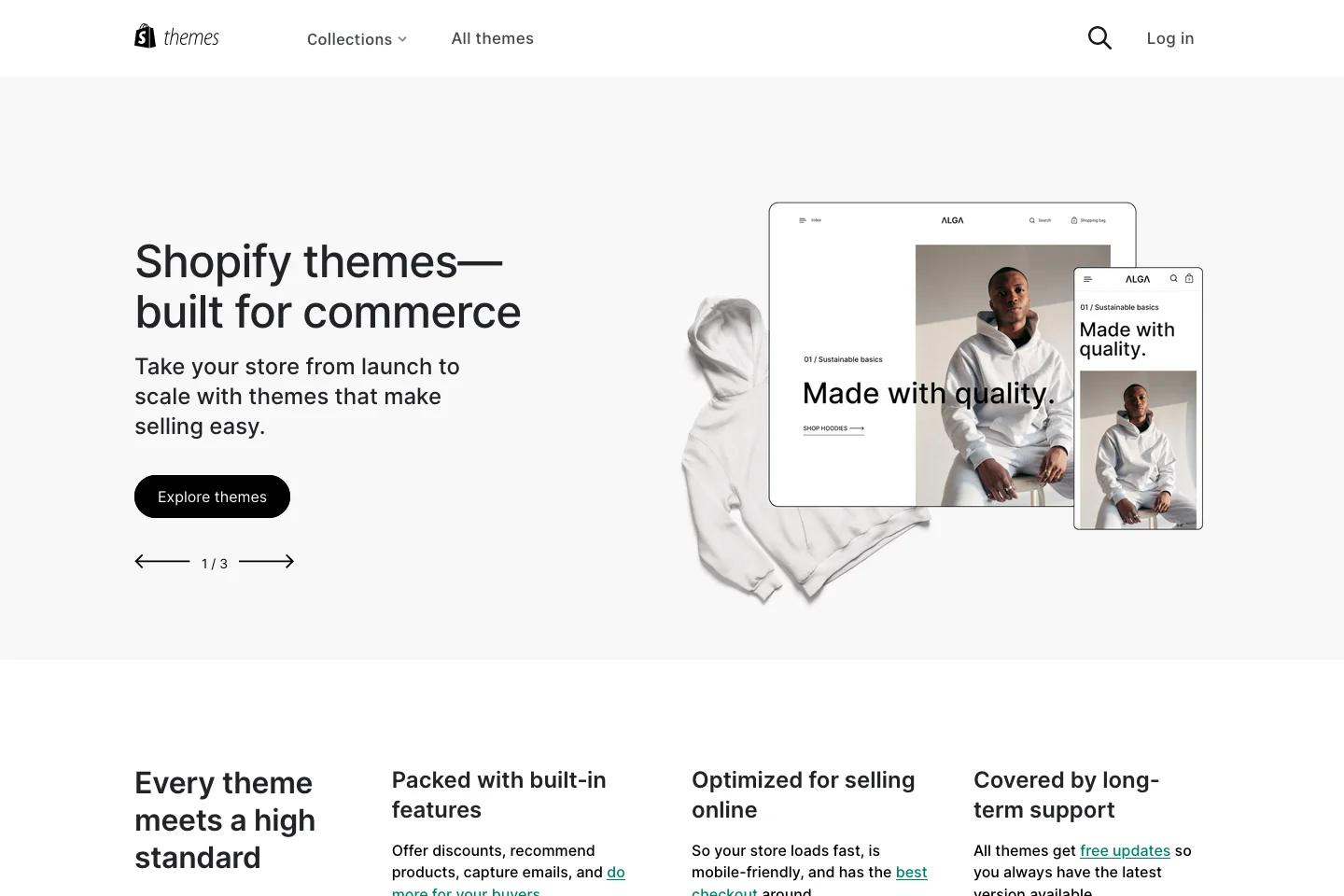
To ensure a user-friendly design, ensure your store is responsive and mobile-friendly. With most online shopping now taking place on mobile devices, your store must look and function seamlessly across all screen sizes. Test your store on different devices to ensure a consistent user experience.
If you’re not confident in your design skills or want a more professional touch, consider working with a Shopify development agency like ours. We specialise in creating visually appealing and high-performing Shopify stores. We design and build custom Shopify themes and optimise them for higher conversions. As part of the process, we’ll rely on our experience to provide guidance on best practices for user experience, such as creating straightforward and intuitive navigation, optimising product pages, and integrating trust-building elements like customer reviews.

Investing time and effort into designing your store can create a visually appealing and user-friendly online shopping experience to attract and engage customers. Whether you customise your store yourself or work with a Shopify website design agency, remember to keep your target audience in mind and prioritise simplicity and functionality. Your store’s design can significantly impact your Shopify dropshipping business’s success, so make sure to give it the attention it deserves.
Section 3: Sourcing Products for Your Store
When finding the best products to sell for your Shopify Dropshipping business, there are a few key factors to consider. First and foremost, you want to focus on products that are in high demand. Look for trends and popular items that have a consistent market. This will ensure a steady stream of customers interested in purchasing your products.
3.1: Finding Reliable Suppliers
When it comes to Shopify dropshipping, you want to work with suppliers who can provide high-quality products and reliable shipping services. But how do you find these trustworthy suppliers?
One option is to source products from AliExpress, a popular platform that connects sellers with manufacturers and wholesalers. AliExpress offers a wide range of products at competitive prices, making it a popular choice for many dropshippers. However, it’s important to carefully vet suppliers on AliExpress and read customer reviews to ensure they have a good track record.
Another option is to explore other platforms and directories that connect dropshippers with reliable suppliers. These platforms often have strict vetting processes to ensure the quality and reliability of their suppliers. Shopify also has a list of verified suppliers you can access through their platform.
Ultimately, finding reliable suppliers requires research and due diligence. Take the time to review supplier ratings, read customer reviews, and reach out to suppliers directly to ask questions and gather more information. By working with trustworthy suppliers, you can provide a positive experience for your customers and build a successful Shopify Dropshipping business.
3.2: Integrated Dropshipping Apps
Shopify makes it effortless to get into dropshipping by featuring apps in their App Store, allowing users to find products and start selling in a jiffy.
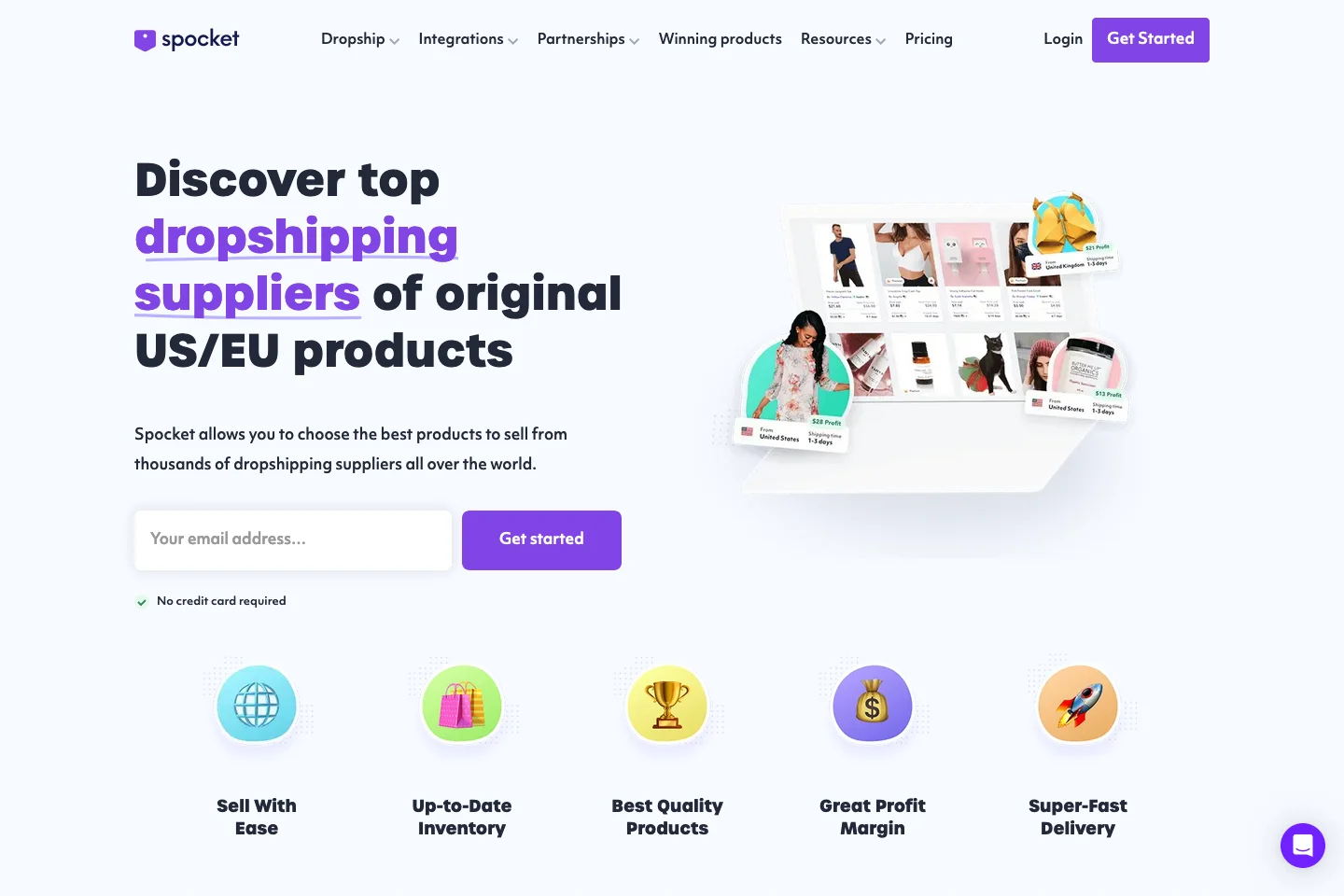
Spocket
Since its launch in 2017, Spocket has been widely praised with an impressive 4.7-star rating on the Shopify App Store and 4,261 reviews as of August 22nd, 2022. Suppliers from the US and Europe are guaranteed quick delivery within those two regions, but that does limit potential international expansion later on down the line.
An additional perk of Spocket is the inventory auto-updates and real-time order tracking feature to facilitate inventory control. One standout capability of Spocket is its order samples option which allows merchants to verify the shipping speed and quality of products before distributing.
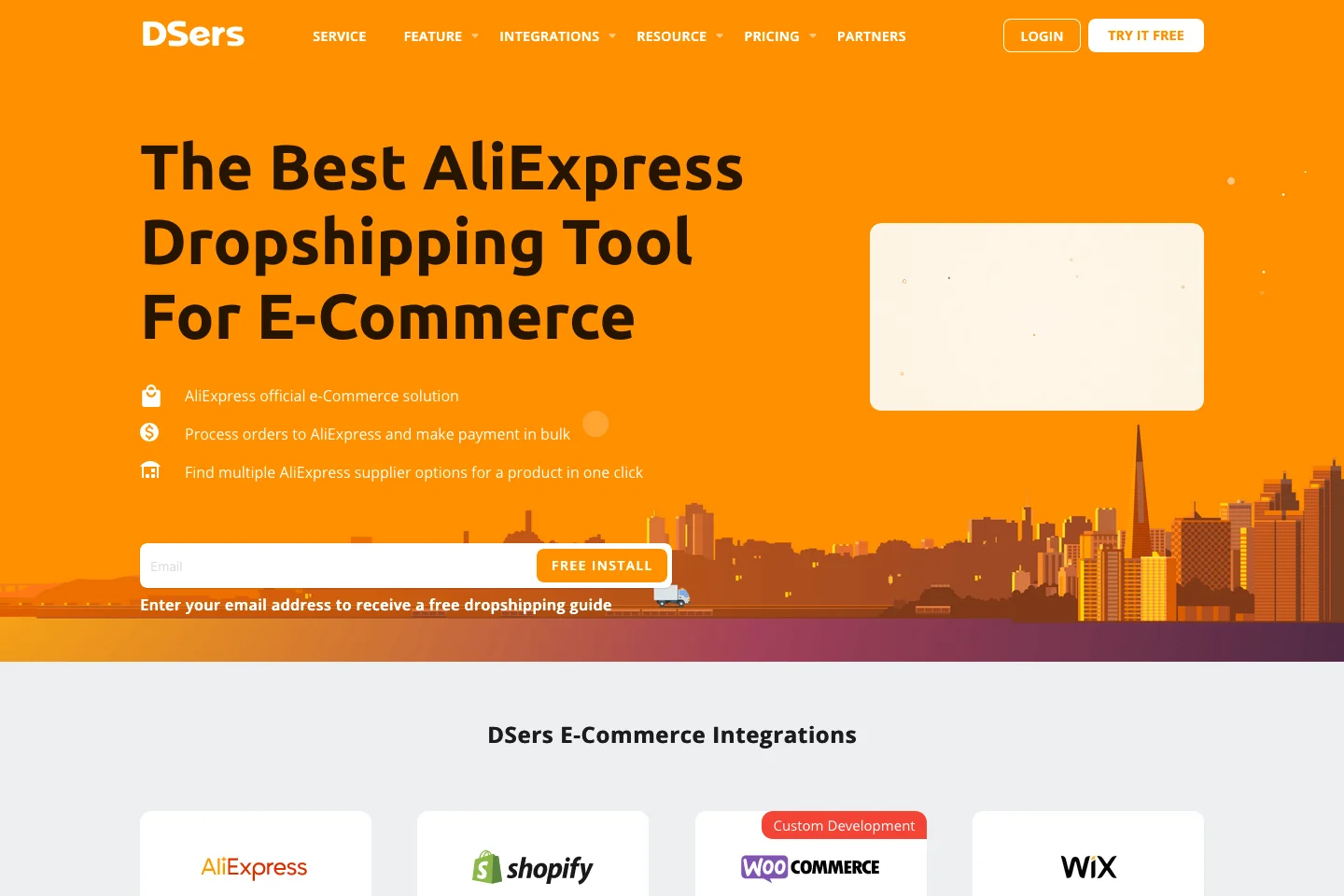
DSers
Launched in May 2018 as a Shopify app, DSers quickly gained traction and has become one of the best-rated apps, achieving a 5-star rating with over 17,500 reviews as of August 22nd, 2022.
Unlike Spocket, DSers takes advantage of the AliExpress API, allowing merchants to access more precise information from AliExpress, import product data using innovative technology, and, most importantly, have the ability to place over 100 orders in minutes, making it the app of choice for those who want to save time.
Featuring an automatic sync of tracking numbers, real-time inventory updates, supplier management features, supplier optimisers, and more, DSers provides one of the most comprehensive solutions available. It can also tie into other eCommerce platforms, such as WooCommerce, for a better WooCommerce website design.
3.3: Product Selection Strategies
Look for trends and popular items that have a consistent market. This will ensure a steady stream of customers interested in purchasing your products.
In addition to demand, it’s essential to consider the profit margins of the products you choose. You want to find products with a good balance of high-profit margins and reasonable selling prices. This will allow you to profit while offering your customers competitive prices.
Another factor to consider when finding the best products to sell is the potential for repeat customers. Look for products that are highly likely to repeat purchases or offer the opportunity for upselling and cross-selling. This will help you build a loyal customer base and increase overall revenue. Additionally, think about seasonal products that may be in high demand during certain times of the year. Offering trendy or seasonal products can capitalise on the current market and attract more customers.
When it comes to pricing your products, keep in mind that customers are willing to pay more for quality products from trusted brands. In fact, research shows that people are willing to pay up to 17% more for products from companies with excellent customer service.
Source: American Express
Lastly, it’s essential to keep an eye on your competition. Look at what products they are selling and how they are marketing them. This will give you valuable insights into what products are thriving in the market and how to differentiate yourself.
By considering these factors and doing thorough research, you can find the best products to sell for your Shopify Dropshipping business and set yourself up for success.
Section 4: Managing Your Dropshipping Business
Managing your dropshipping business involves monitoring and optimising various aspects of your business, such as inventory management, customer service, and marketing strategies. With effective management, you can ensure smooth operations, improve customer satisfaction, and drive growth. Implementing automation tools and staying updated with industry trends is key to efficiently managing your dropshipping business. Regularly analyse your performance metrics and make data-driven decisions to continuously improve and scale your business.
4.1: Order Fulfillment
The order process begins when a customer places an order on your Shopify store. As the store owner, having a streamlined system to receive and process these orders is important. This includes notifying your suppliers about the order, ensuring they have the necessary inventory, and arranging for the products to be shipped to the customer.
To handle customer orders efficiently, it’s essential to have clear communication with your suppliers. This includes providing them with all the necessary order details, such as the customer’s shipping address and special instructions. Additionally, you should establish timelines for order fulfilment to ensure that customers receive their products within the promised timeframe.
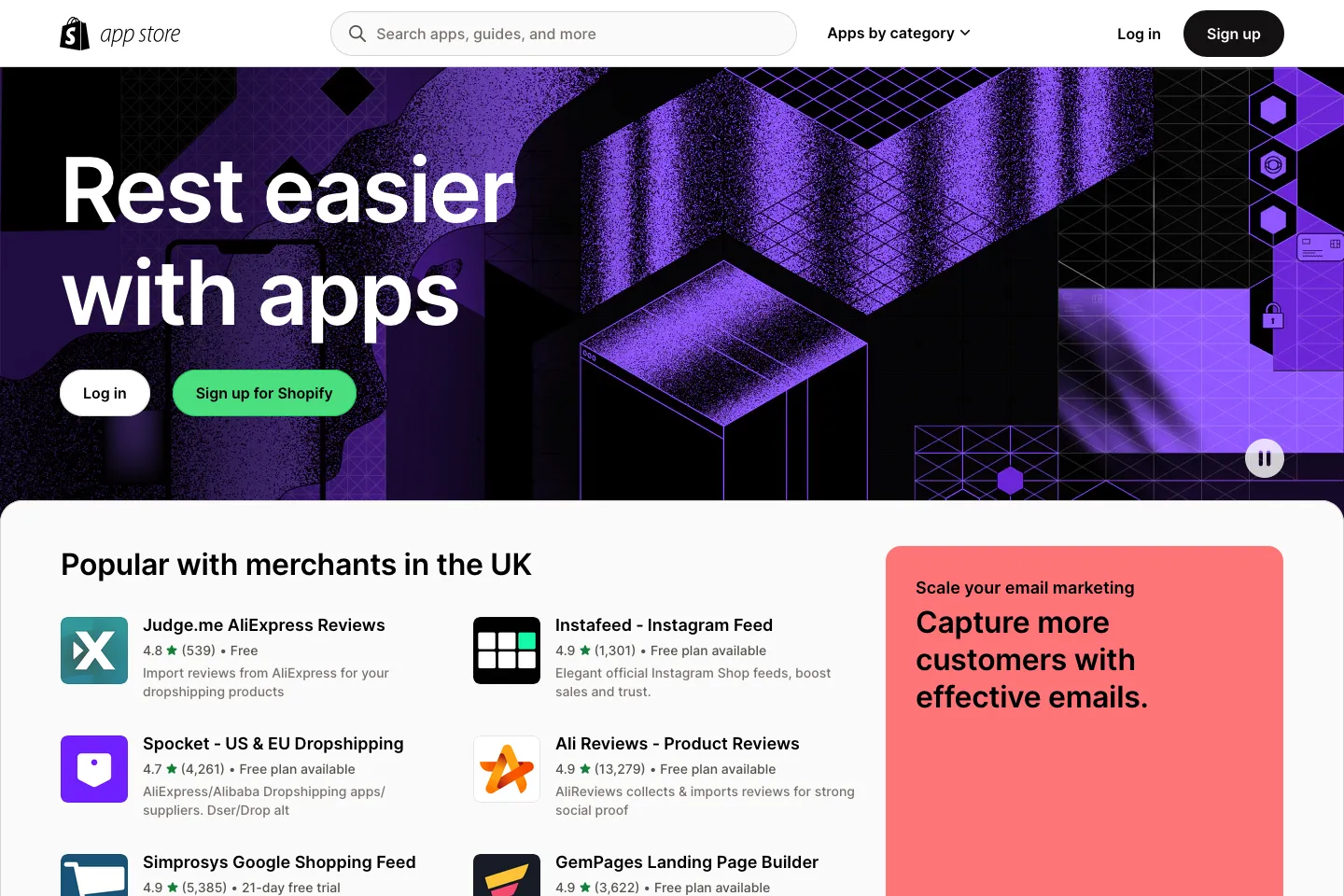
Automation tools can also help streamline the order fulfilment process. You can automate tasks such as inventory management and order tracking by integrating apps or software solutions with your Shopify store. This can help you save time and reduce errors in the order fulfilment process.
If you can’t find a Shopify App that meets the functionality you require on the Shopify App Store, then our Shopify app design and development services can help elevate your store. Our expert Shopify agency specialists can help to build custom, bespoke Shopify apps to maximise your store and improve customer experiences.
4.2: Customer Service and Communication
Once your Shopify dropshipping business starts gaining traction, it’s important to have a plan for handling customer service and returns. Providing exceptional customer service is critical to building trust and loyalty with your customers, and handling returns efficiently is essential for maintaining customer satisfaction.
With customer service, aim to respond to inquiries and concerns as quickly as possible. Be proactive in addressing customer issues and always strive to provide a positive resolution. This may involve offering refunds, exchanges, or other solutions to ensure customer satisfaction.
Regarding returns, communicate your return policy on your website and make the process easy for customers. Provide clear instructions on how to initiate a return and offer prepaid shipping labels, if feasible. Streamlining the returns process can reduce customer friction and improve their overall experience with your brand.
Remember, providing exceptional customer service and handling returns effectively can help you build a positive reputation and keep customers returning for more. Take the time to develop and refine a customer service strategy as your business grows.
Section 5: Marketing and Growing Your Shopify Dropshipping Business
Once your Shopify store is up and running, it’s time to focus on marketing and driving traffic to your online store. Effective marketing is crucial for attracting potential customers and increasing sales. This section will explore various strategies to help you successfully market your Shopify store.
5.1: Digital Marketing Strategies
One of the most powerful marketing tools available is social media. Create engaging content, share product updates and promotions, and interact with your audience on Instagram, Facebook, and X platforms. Utilise influencer marketing by partnering with popular social media personalities who align with your brand. They can help promote your products to their followers and generate buzz around your store.
Search engine optimisation (SEO) is another key component of marketing your Shopify store. Optimise your product descriptions and website content with relevant keywords to improve your search engine rankings. This will make it easier for potential customers to find your store when they search for products in your niche.
Email marketing is an effective way to nurture customer relationships and encourage repeat purchases. Collect email addresses through a pop-up on your website and create personalised email campaigns with special offers, product recommendations, and updates about your store.
Facebook is one of the most popular marketing channels for Shopify dropshippers, with over two-thirds of them using it to promote their products.
Source: Oberlo
Consider running paid advertisements on platforms like Google Ads and Facebook Ads to reach a wider audience. These platforms allow you to target specific demographics and interests, ensuring that the right people see your ads.
Finally, consider collaborating with other brands or businesses in your niche. This can include guest blogging, co-marketing campaigns, or cross-promotions. By leveraging the audience and reputation of another brand, you can increase your visibility and attract new customers to your Shopify store.
By implementing these marketing strategies, you can increase brand awareness, drive traffic to your store, and ultimately boost your sales. Stay consistent with your marketing efforts, analyse the results, and adjust your strategies accordingly. With dedication and creativity, your Shopify dropshipping business will thrive.
5.2: Measuring Success with Analytics
Measuring success is essential for any business, and Shopify dropshipping is no exception. Luckily, with the power of analytics, you can easily track and analyse important metrics to gain insights into the performance of your Shopify store.
One of the most valuable analytics tools for measuring success is Google Analytics. Integrating Google Analytics with your Shopify store lets you track various metrics, including website traffic, conversion rates, and customer behaviour. This data can help you understand which marketing campaigns drive the most traffic, which products generate the most sales, and how customers navigate through your store.
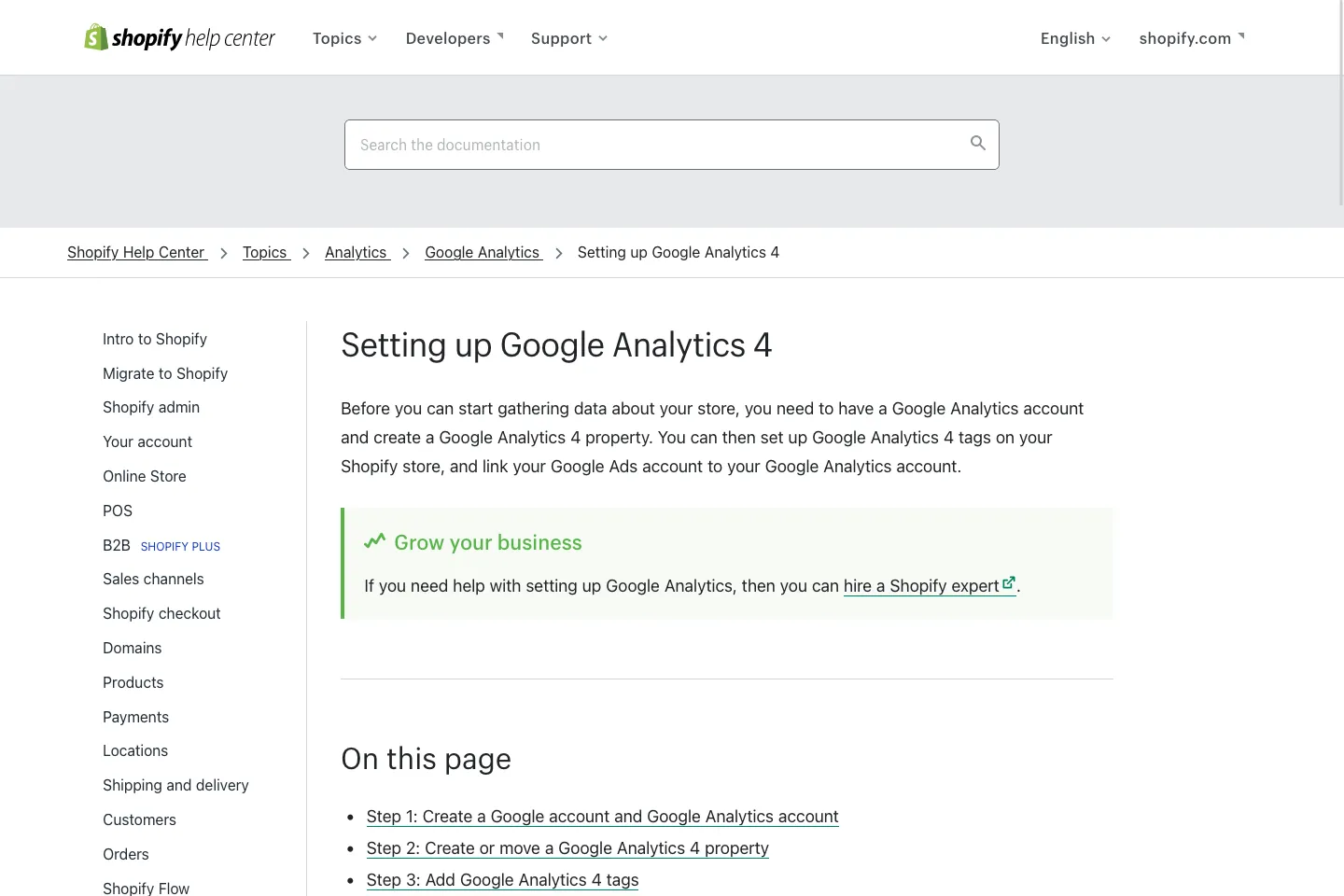
Another important metric to measure is customer acquisition cost (CAC). CAC refers to the cost it takes to acquire a new customer, and it’s crucial for understanding the effectiveness of your marketing efforts. By tracking CAC, you can determine your marketing campaign’s return on investment (ROI) and adjust your strategies accordingly.
Conversion rate is another key metric to measure. This metric tells you the percentage of visitors who purchase in your store. By monitoring and optimising your conversion rate, you can identify areas for improvement in your website design, product listings, and checkout process.
Furthermore, tracking customer lifetime value (CLTV) is crucial for understanding the long-term value of each customer. CLTV calculates a customer’s average revenue over their lifetime with your business. By focusing on increasing CLTV, you can implement strategies to encourage repeat purchases, build customer loyalty, and ultimately increase your revenue.
In addition to these metrics, tracking key performance indicators (KPIs) specific to your business goals is important. Whether email sign-ups, social media engagement, or average order value, identifying and monitoring your KPIs will help you focus on the metrics that directly contribute to your success.
By regularly monitoring and analysing these metrics, you can gain valuable insights into the performance of your Shopify dropshipping business. Use this information to make data-driven decisions, optimise your marketing strategies, and continually improve your store. Remember, success is not a one-time achievement but an ongoing measurement, analysis, and optimisation process.
5.3: Scaling Your Business
Now that your Shopify dropshipping business is up and running, it’s time to start thinking about scaling your business and automating processes. Scaling your business means finding ways to increase your revenue and expand your reach. One way to do this is by implementing marketing strategies like the above to attract customers and drive sales. This could include running targeted advertising campaigns, partnering with influencers, or leveraging social media platforms to reach a wider audience.
Automating processes is another crucial step in scaling your business. Look for ways to streamline tasks and reduce manual work. This could involve integrating apps and software solutions that automate order processing, inventory management, and customer service. By automating these processes, you can free up more time to focus on growing your business and finding new opportunities.
Remember, scaling your business is an ongoing process that requires continuous effort and adaptation. Stay updated on industry trends, monitor your analytics, and be open to new strategies and opportunities. With the right mindset and a commitment to growth, your Shopify dropshipping business has the potential to thrive and achieve long-term success.
Section 6: Managing Finances and Legal Considerations
It’s important to keep track of your expenses, revenue, and profit margins. This will help you make informed decisions and ensure the financial health of your Shopify dropshipping business. While ensuring you comply with all legal requirements, such as obtaining necessary licenses and permits, registering your business, and adhering to consumer protection laws, you can rest more easily at night.
6.1: Financial Management
Financial management is a critical aspect of running a successful Shopify Dropshipping business. To effectively manage your finances, it’s important to have a solid budgeting plan in place. This includes tracking your expenses, such as product, marketing, and operational costs, and comparing them to your revenue to ensure profitability. You can identify areas to cut costs and optimise your budget by carefully monitoring your expenses.
In addition to budgeting, pricing strategies and profit margins are key factors in financial management. Set your prices in a way that allows you to make a profit while remaining competitive in the market. Consider factors such as the cost of the product, shipping fees, and any additional expenses. Calculate your profit margins to ensure they are sustainable and align with your business goals.
Regularly analyzing your financial performance and making data-driven decisions will help you stay on track and make necessary adjustments: utilise financial management tools and software to streamline the process and ensure accurate record-keeping.
6.2: Legal Compliance
While dropshipping offers many advantages, it’s crucial to understand and adhere to important legal requirements to protect your business and maintain smooth operations.
One important legal aspect of dropshipping is trademark compliance. Before selling any products, it’s important to research and check that you are not infringing on any trademarks. This includes conducting a thorough search to ensure that your products do not violate any existing trademarks or copyrights. Additionally, consider registering your own trademarks to protect your brand and prevent others from using similar names or logos.
Taxes are another key consideration in legal compliance. As a business owner, you are responsible for collecting and remitting sales taxes by local, state, and national regulations. Make sure to understand the tax laws in the jurisdictions where you are selling products and comply with all reporting and remittance requirements.
According to the Federal Trade Commission (FTC), all Shopify dropshippers are responsible for accurately representing their products and ensuring they comply with relevant laws and regulations, including disclosing any necessary product information and not making false or deceptive claims about the product.
Source: FTC
In addition to trademarks and taxes, specific business regulations may apply to your Shopify dropshipping business. These regulations can vary depending on your location and the nature of your products. Researching and complying with applicable regulations, such as licensing requirements or product safety standards, is important. This will help you avoid legal issues and ensure the safety and satisfaction of your customers.
It’s always a good idea to consult a legal professional to know that your Shopify dropshipping business fully complies with all relevant laws and regulations. They can provide guidance on the specific legal requirements that apply to your business and help you navigate any potential legal challenges.
Section 7: Success Stories and Tips from Shopify Dropshipping Experts
The dropshipping market is anticipated to surge to a $476.1 billion U.S. dollar industry by 2026! With this level of lucrative possibility and market expansion, now’s the time to capitalise on the dropshipping world. Here are a few dropshipping success stories to get those cogs ticking.
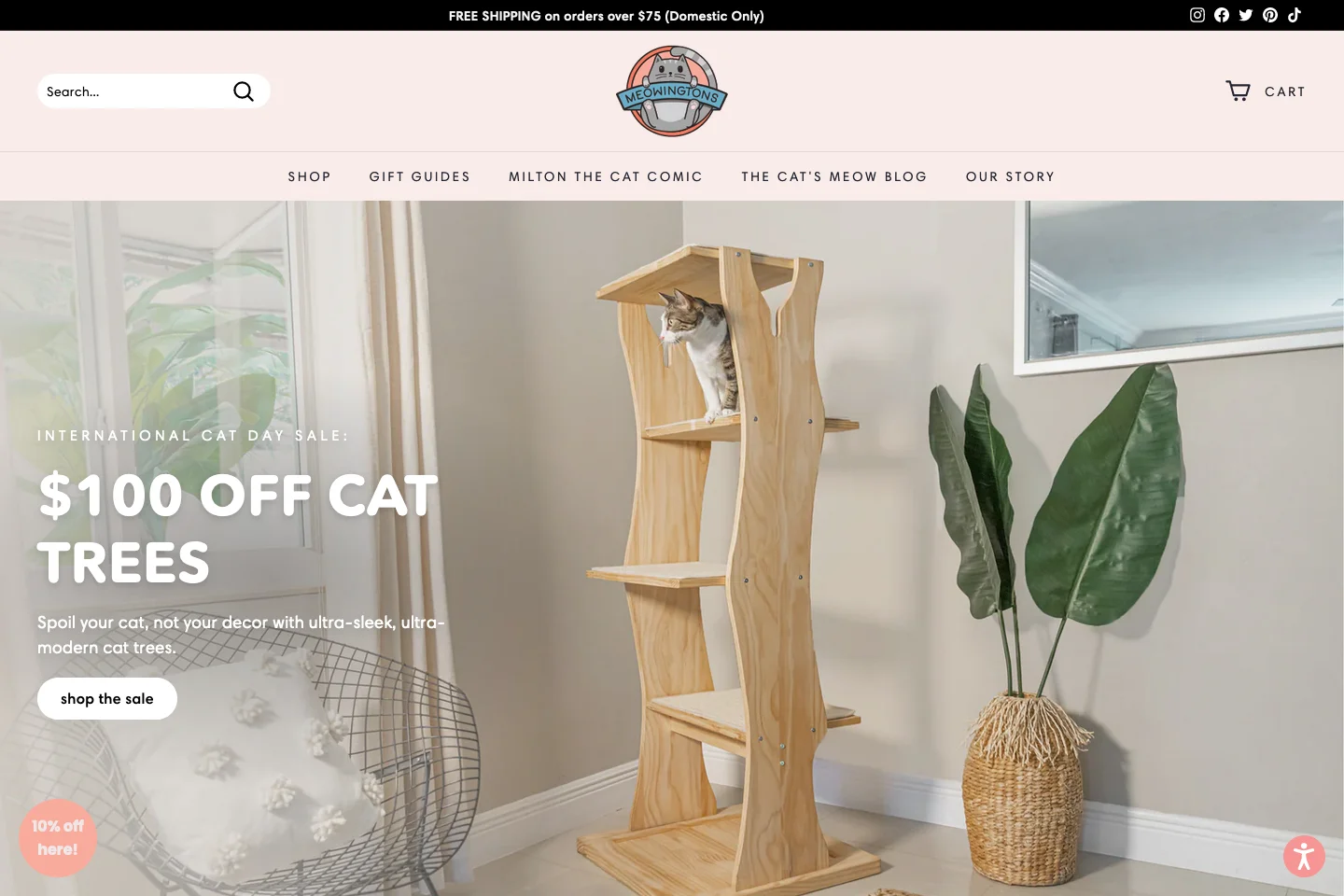
Meowingtons
Meowingtons demonstrates that catering to a small, specific market is an incredibly profitable venture. Focusing solely on products related to cats sourced from AliExpress, the company attracts thousands of visitors daily and boasts a combined following of 1.9 million across Instagram and Facebook.
This success is primarily due to their brilliant branding efforts; when they opened in 2014, all their product listings were aimed at cats of all shapes and sizes. This helped build the company’s reach, expand its range of products, and build an adoring audience of cat-aholics through social media campaigns with irresistible photos of cats. Recently, Meowingtons has expanded beyond its dropshipping model to offer its own customised products and partner with a cat cafe and foster home for abandoned cats.
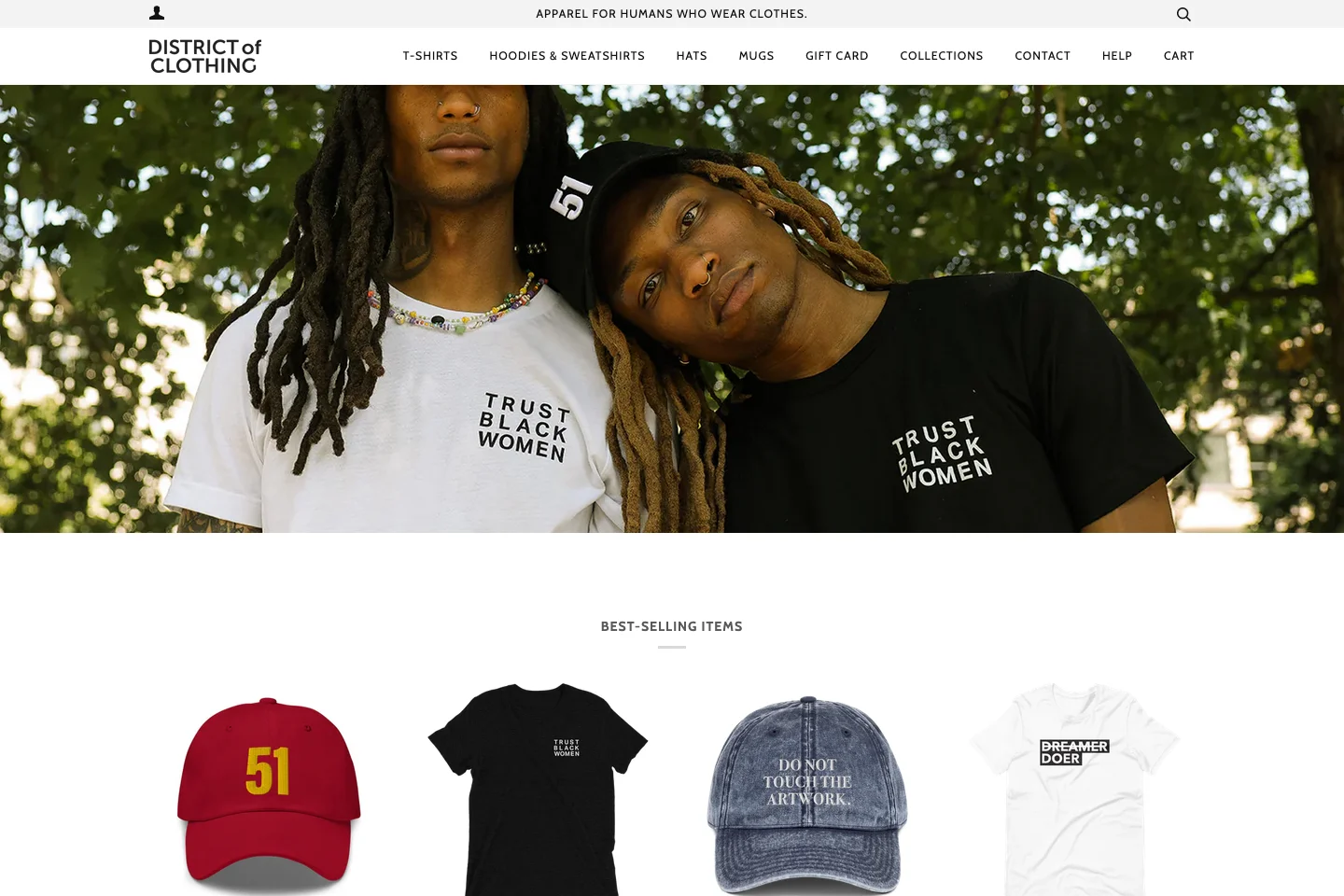
District of Clothing
Founded in 2014 in Washington D.C., the District of Clothing Store is a remarkable example of success in print-on-demand. Dionna Dorsey, the founder, had the idea while working her full-time job at Dionna Dorsey Design. She intended to spread positivity, so she created apparel featuring inspirational messages and used Printful to fulfil the printing and shipping.
Dionna began District of Clothing as a side project, investing only 1-2 hours of her time per day. Remarkably, by 2016 it had generated $29K in additional income. This success is primarily due to the positive and powerful messages that the products bear, plus new designs and clever marketing strategies using influencers and story-telling.

Warmly
Warmly stands out from the crowd as a successful Shopify dropshipping store selling stylish furniture and decorations for the home. With an estimated monthly revenue of $566,000 to $1,100,000, according to Salesource, the store is less than five years old and yet flourishing. Interestingly, their growth can be attributed to an unlikely source: Pinterest. Due to its visual search engine, Warmly has successfully utilised the site to reach its target demographic, with considerable upticks in website visits.
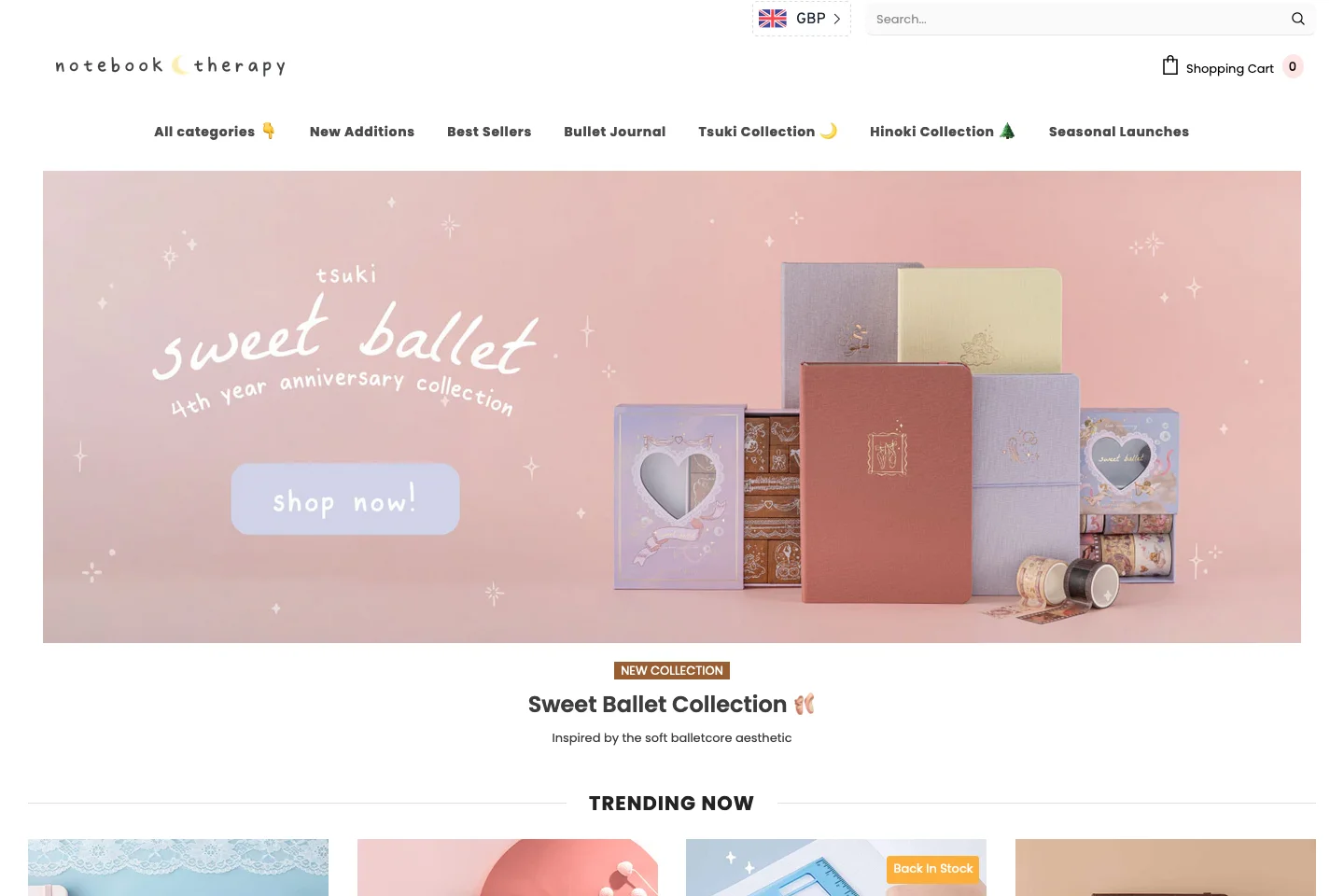
Notebook Therapy
Salesource has estimated Notebook Therapy’s sales to be between $350,000 and $700,000 per month, making it a top destination for young women seeking Japanese-inspired stationery, gadgets, and tote bags. This company has also put considerable effort into its social media marketing strategy, the most successful of which is its Instagram account boasting over one million followers. Its appeal goes beyond its offerings, though; the shop’s creative and colorful design captures customers’ attention and the complimentary worldwide shipping and 30-day return policy win them over.
Frequently Asked Questions
Is Shopify Good For Beginners?
If you’re a beginner looking to start your online store, Shopify is an excellent option. Shopify makes it incredibly easy to set up and manage your store, even without experience. With its user-friendly interface and extensive range of features, you’ll be able to easily navigate the platform. Plus, Shopify offers comprehensive support and resources to help you every step of the way. So, if you’re a beginner looking to dive into eCommerce, Shopify is an excellent choice!
How much does an average Shopify store make?
One question that often comes up when starting a Shopify Dropshipping business is, “How much can I expect to make?” While there is no definitive answer to this question, the potential for profit in a Shopify store is high. Many successful store owners have reported making thousands or even millions of dollars in revenue. However, it’s important to note that individual results can vary greatly depending on factors such as product selection, marketing strategies, and competition. The key to success lies in careful planning, thorough research, and a willingness to adapt and learn along the way. So, while there is no set amount that an average Shopify store makes, the potential for financial success is certainly there for those willing to put in the effort.
Can you dropship anything on Shopify?
Dropshipping on Shopify allows you to sell a wide variety of products, but there are some restrictions. Shopify prohibits the sale of certain items, such as illegal products, counterfeit goods, and products that promote violence or discrimination. Additionally, some suppliers may have their own restrictions on the types of products they will dropship. However, there are still countless product options available, ranging from clothing and accessories to home goods and electronics. With careful research and supplier selection, you can find profitable products to dropship on Shopify and create a successful online store.
Is Amazon dropshipping profitable?
When it comes to dropshipping, Amazon is a popular platform that many sellers consider. However, the profitability of Amazon dropshipping can vary depending on various factors. While making a profit through Amazon dropshipping is possible, it requires careful research and strategic planning. Factors such as competition, fees, and the ability to find profitable products at a good price can impact profitability. It is important to carefully analyse the market and consider your own business goals before deciding if Amazon dropshipping is the right option for you.
Conclusion
Shopify dropshipping offers a fantastic opportunity for aspiring entrepreneurs to start their online store without the hassle of inventory management. Throughout this guide, we have covered everything you need to know to get started with Shopify dropshipping:
- From understanding the basics of dropshipping to setting up your Shopify store and implementing effective marketing strategies.
- We dived into the advantages and challenges of dropshipping, highlighting its low startup cost, flexibility, and potential for location independence. We also emphasised the importance of careful research and planning, including choosing a profitable niche, finding reliable suppliers, and setting competitive prices.
- We explored the fun step of setting up your Shopify store and provided tips on designing your store, selecting the best products to sell, and managing your inventory. We also delved into the marketing world, covering strategies such as social media, SEO, email marketing, and collaborations.
- We looked at measuring success to continuously improve your dropshipping business, and we introduced the importance of analytics and tracking metrics such as conversion rates, customer acquisition cost, and customer lifetime value.
Use the resources and tools provided throughout this guide to set up your Shopify store, find reliable suppliers, and implement effective marketing strategies. Don’t be afraid to explore further reading and seek out additional information to continue growing your knowledge and skills.
Further Reading From Shopify
- Amazon Dropshipping Guide: How To Dropship on Amazon (2023)
- AliExpress Dropshipping: A Complete Guide to Sourcing From AliExpress
- The Best Dropshipping Products to Sell (And Ideas to Market Them)
Remember, building a successful Shopify dropshipping business takes time and effort, but with dedication and a strong foundation, you can achieve financial success and create the lifestyle you desire. So why wait? Take the leap and start your Shopify dropshipping adventure today! The sky’s the limit!
To stay updated with the latest tips and insights, subscribe to our newsletter and follow us on social media. And if you have any questions or need further assistance, don’t hesitate to contact us. As a Shopify Partner, we’re here to support you every step of the way.



